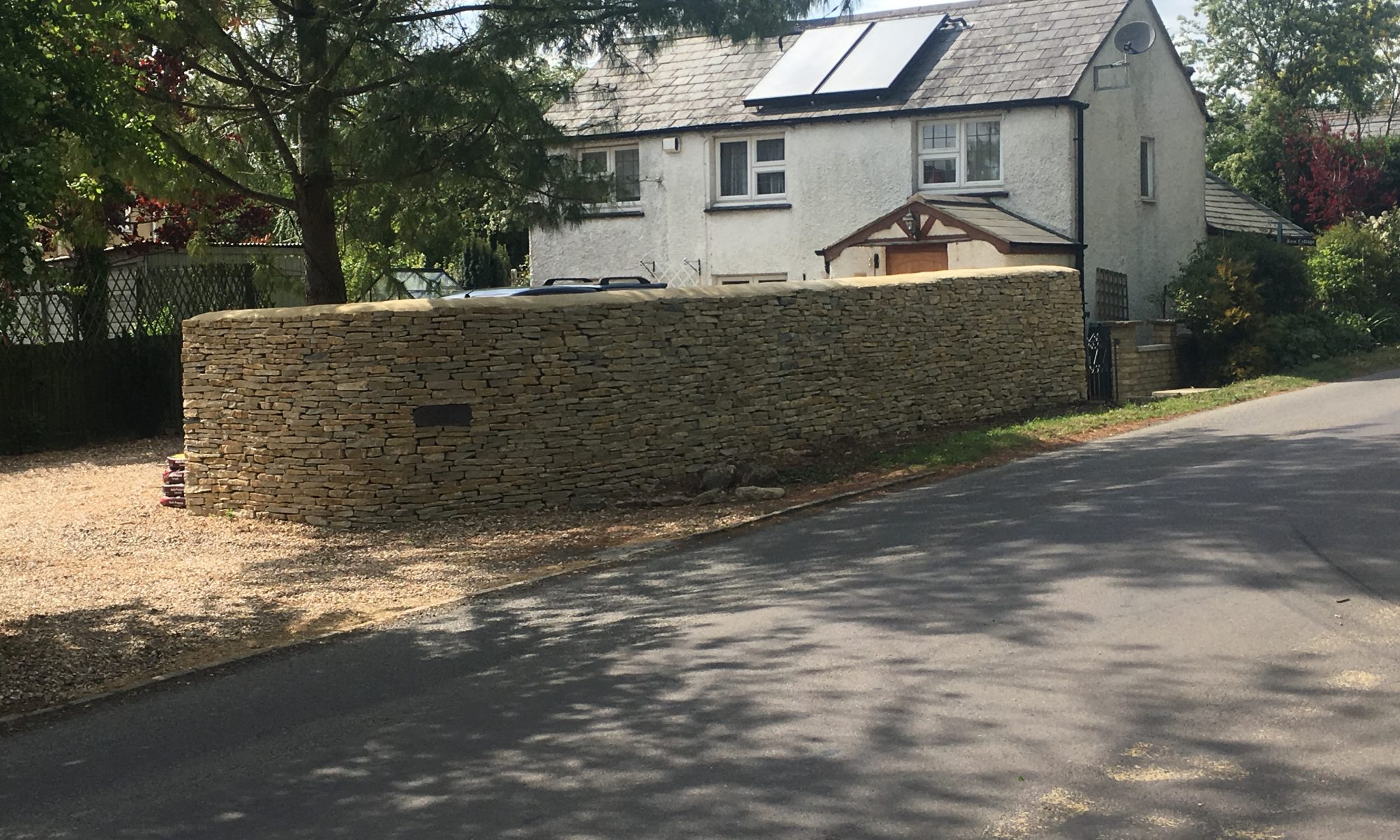About us and Walls.
Walls and Nature. Over the years of repairing our local walls, I have come across bees nests, newts, slow worms, snakes, mice and birds nests, not to mention the millions of spiders and snails that take refuge in our local walls, they are a great place to live if you are the size of a 5p piece. It is important to create a space for nature and work with the land and the materials that have come from within. Understanding this makes a real difference in the way I approach repairing or building a wall. The technical side always comes first, but there is always room for nature and an understanding of geology in a dry stone wall.
Dry Stone Walling Association.
I am a professional member of the Dry Stone Walling Association and take an active role in the local SW England Branch. I am qualified to level 2 (intermediate) in drystone walling with the DSWA and I am qualified as trainer/instructor. I hope this reassures any potential customers of my commitment to quality and technical understanding of the work involved. There is a lot more to a wall than it just looking looking pretty. It is worth remembering that a dry stone wall is built without sand and cement, block work or concrete for footings. These are a dry stone walls worst enemies as they stop the wall from breathing and moving with the land. Using cement can result in cracks and often shattered stone. My work is carried out traditionally which will ensure the wall will stand the test of time by using the same methods passed on to me by my father.
Part of life.
Growing up in and around Marshfield in the South Cotswolds, dry stone walls are part of life, from using a bit of stone to draw on the road to learning how to build walls from my Father, I have always been around these wonderful creations and its great to in and around them repairing and building new walls. Nearly all of my work is building new or rebuilding dry stone walls, so I am called a ‘Waller’. My father likes to help out from time to time, he has been building drystone walls for about 60 years his Brothers did the same, my great grandfather was a waller as well. As far as my father can remember he charged 4 old pence a yard, I am sorry, but it has gone up a little since the late 1800’s. Apparently when it was raining he worked with a sheet of galvanized tin on his back to keep him dry. It is worth remembering that a dry stone wall is built without sand and cement, block work or concrete for footings. These are a dry stone walls worst enemies as they stop the wall from breathing and moving with the land. Using cement can result in cracks and often shattered stone. My work is carried out traditionally which will ensure the wall will stand the test of time by using the same methods passed on to me by my father.
Old methods versus New methods.
There may seem to be a lot of different techniques for building dry stone walls nowadays. I have seen them built with gravel, cement and sand in the middle and builders rubble. How do I know what has gone in to them? Well, because they have all needed repairing. Dry stone walls are just that, stone with nothing else, sometimes they get a concrete cap in our local area but everything below is just stone placed in such a way that the other stones can not move, this is how dry stone walls work and if you look up the specifications for a dry stone wall you will see there is only one way worldwide. Even when the stones are tightly packed, there can often be a small gaps in-between the stones where nature can get in. This of course is less likely with a manicured square brick type dry stone wall. Working with the stones and getting them to fit as closely as possible and as tightly as possible is part of dry stone walling, there is no cement to help get me out of a tricky spot, nor do I spend half or more of my time hitting the stones in to square blocks.
Why? Am I lazy? Do I not like mixing cement?
Neither is is the answer, ask anybody that understands our local geology and they will tell you that you weaken our local stone every time you strike it. Watch a stone mason in Bath or someplace close and see how careful they are with the stone, compare that with hitting it with a hammer to bludgeon it into shape. When it comes to cement, then that’s another problem, our local stone has been underground for millions of years, as such it absorbs water and this will make the stone ever so slightly expand when wet and more so when frozen. The cement that the stones are then bedded into does not allow the stone to expand and the stone shatters. Have a look around at local walls built ‘the modern way’ with cement and you will see it’s true. Local walls around here with our limestone should be very slightly pitched out so as to let the water naturally drain out of the wall. They will also settle over time, some can settle into the ground by an inch in just a few years, on a long wall this means it has to move and settle with the ground, and they will quite happily do this as they have done for centuries when built traditionally.
Walls and Nature.
Over the years of repairing our local walls, I have come across bees nests, newts, slow worms, snakes, mice and birds nests, not to mention the millions of spiders and snails that take refuge in our local walls, they are a great place to live if you are the size of a 5p piece. It is important to create a space for nature and work with the land and the materials that have come from within. Understanding this makes a real difference in the way I approach repairing or building a wall. The technical side always comes first, but there is always room for nature and an understanding of geology in a dry stone wall.
A rich mans hobby.
Are they expensive? Well, maybe if you watch a particular TV programme with a certain farmer explaining how really expensive it is you would think dry stone wallers are all driving around in new 4×4’s living in huge houses surrounded by loads of land, oh, no, thats the farmer isnt it. Try finding a cheaper way, the truth is he wont be able to. Recently I quoted for a new wall build, my quote was for £5.600 including stone and anything else, the builder (and not an expensive one) quoted £9.500 to build a red brick wall the same hight and length. Apples and Pears I hear you say, but I think it proves a point. My quote will be for stone and labour, maybe a small amount of sand and cement if your wall is going to be finished off with a concrete cap, if anther quote has a tonne or two of sand in it, concrete footings, block-work, then I am sure you will get a great looking wall, but it wont be a traditional dry stone wall.
The Dry Stone Walling Association.
There are only a couple of us locally that have taken the time to have our work examined by the DSWA, I have the level 2 certificate and the instructors certificate, I am also a paid up professional member of the DSWA. I am involved with the DSWA on a local and national basis. Happy to chat to you about what I give back to the walling community.
Where do I work?
My main area of work is about 15 – 20 miles around Malmesbury in Wiltshire, this will also include Marshfield, West Kington, Leighterton, Tetbury, Corston. Recently I have been working in Hullavington, Sherston, Warminster, Colerne, Corsham and Pickwick.

